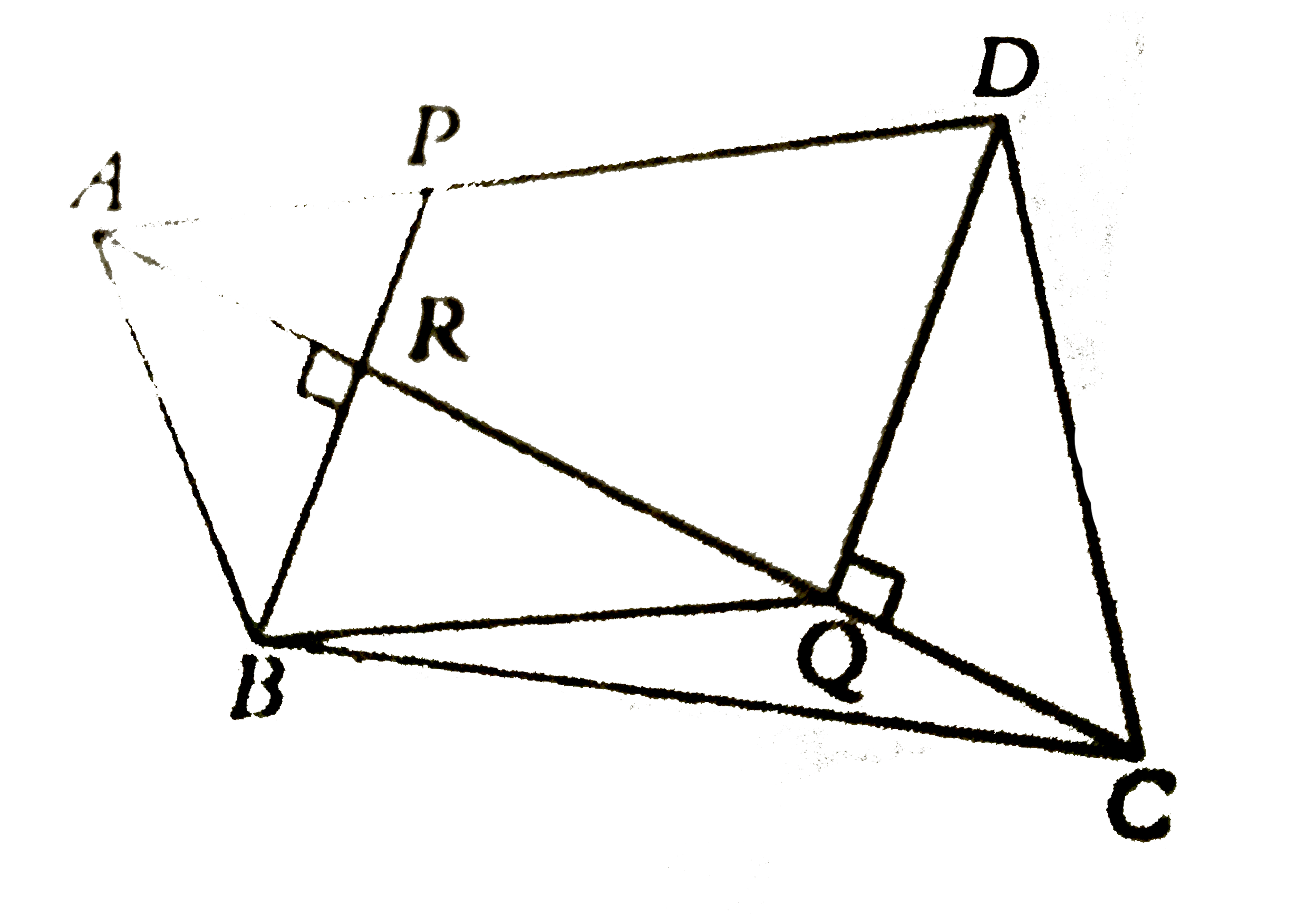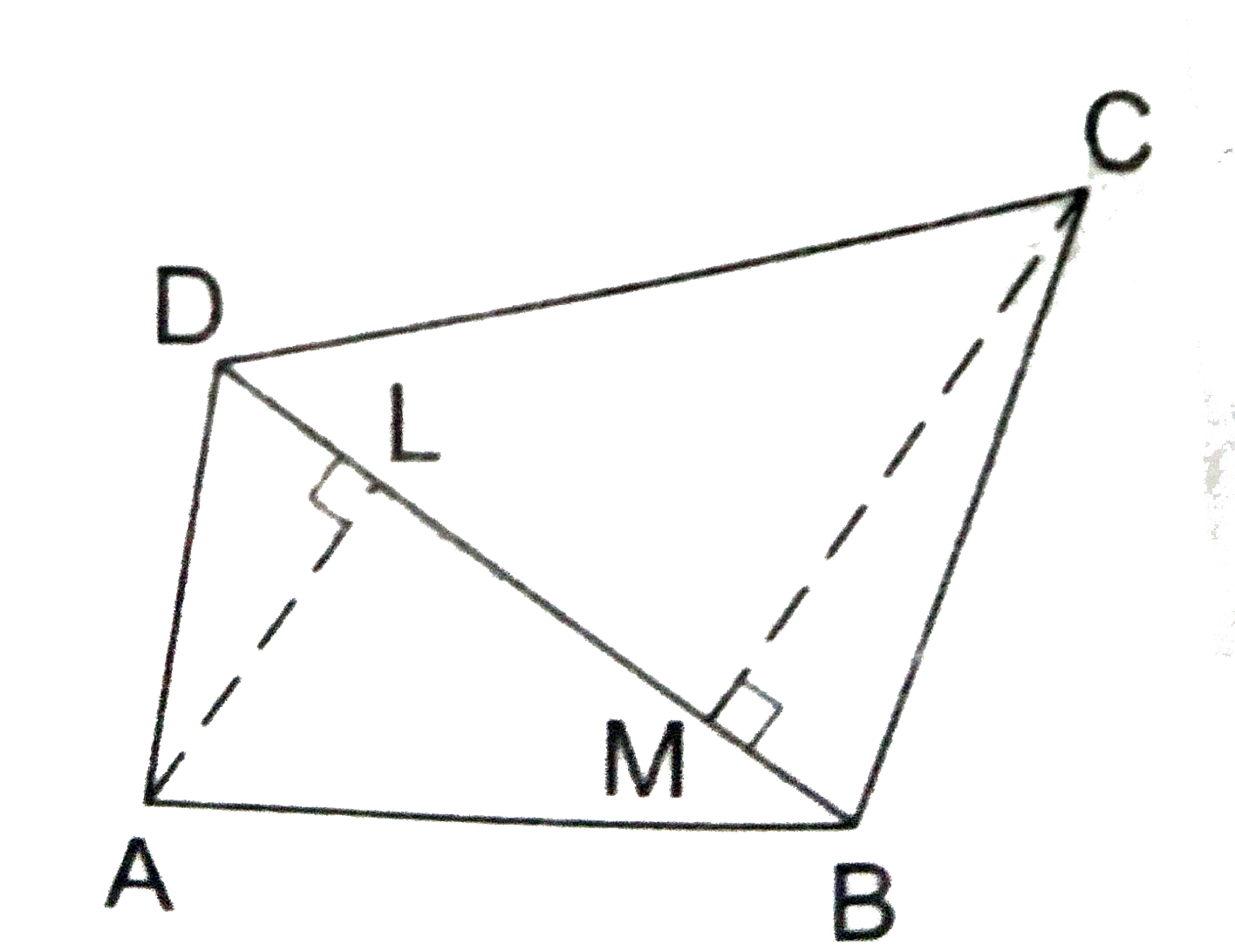
In the figure given above, ABCD is a quadrilateral and BPDQ is parallelogram. AR = 50 cm, CQ = 70 cm, BR = 60, and PR = 40 cm. If the area of the quadrilateral ABCD is 15,600cm2, then find the area of then find the area of the parallelogram BPDQ (in cm2).
A
9460
B
8460
C
7500
D
9000
Video Solution
Text Solution
The correct Answer is:C
BPDQ is a parallelogram.
BP=DQ=BR+PR=60+40=100cm
Area of a quadrilateral
=12h(d1+d2)=12AC(BR+DQ) ltBrgt 12×AC(60+100)=16,000
AC×1602=15,600
AC = 195 cm
AC=AR+RQ+CQ=50+RA+70=195
∴RQ=195−120
RQ = 75 cm
RQ is the perpendicular distance between ¯¯¯¯¯¯BP and ¯¯¯¯¯¯DQ.
∴Area of the parallelogram BPDQ=base×height ltBrgt =BP×RQ=100×75=7500cm2
|
Topper's Solved these Questions
- MENSURATIONBook:PEARSON IIT JEE FOUNDATIONChapter:MENSURATIONExercise:ASSESSMENT TESTS
Explore 24 Videos
- MENSURATIONBook:PEARSON IIT JEE FOUNDATIONChapter:MENSURATIONExercise:Examples
Explore 13 Videos
- MENSURATIONBook:PEARSON IIT JEE FOUNDATIONChapter:MENSURATIONExercise:CONCEPT APPLICATION (LEVEL 2)
Explore 38 Videos
- INDICES Book:PEARSON IIT JEE FOUNDATIONChapter:INDICES Exercise:Test -2
Explore 12 Videos
- MOCK TESTBook:PEARSON IIT JEE FOUNDATIONChapter:MOCK TESTExercise:QUESTIONS
Explore 25 Videos
Similar Questions
Knowledge Check

In the figure given above, ABCD is a quadrilateral and BPDQ is parallelogram. AR = 50 cm, CQ = 70 cm, BR = 60, and PR = 40 cm. If the area of the quadrilateral ABCD is 15,600cm2, then find the area of then find the area of the parallelogram BPDQ (in cm2).A9460B8460C7500D9000ABCD is a parallelogram, ∠DAB=30∘ BC = 20 cm and AB = 40cm. Find the area of parallelogram :
A150 cm2B200 cm2C400 cm2D260 cm2ABCD is a parallelogram and m ∠DAB=30∘, BC=20 cm and AB=20 cm. Find the area of parallelogram:
A150cm2B200cm2C400cm2D260cm2
If the area of a parallelogram ABCD is 30cm2,then the length of altitude AQ is
View SolutionIf area of Parallelogram ABCD is 80cm2 Find the area of ΔAPD.

View SolutionABCD is a quadrilateral with AB = 9 cm, BC = 40 cm, CD = 28 cm, DA = 15 cm and angle ABC is a right-angle.
What is the area of quadrilateral ABCD ?
View SolutionIn the given figure ABCD is a quadrilateral in which diagonal BD=24cm,AL⊥BDandCM⊥BD such that AL=9cm and CM=12 cm. Calculate the area of the quadrilateral .

View SolutionIn the figure, ABCD is a quadrilateral BD = 20 cm. If AL⊥BD and CM⊥BD such that AL = 10 cm and CM = 5 cm, find the area of quad. ABCD.

View Solution
